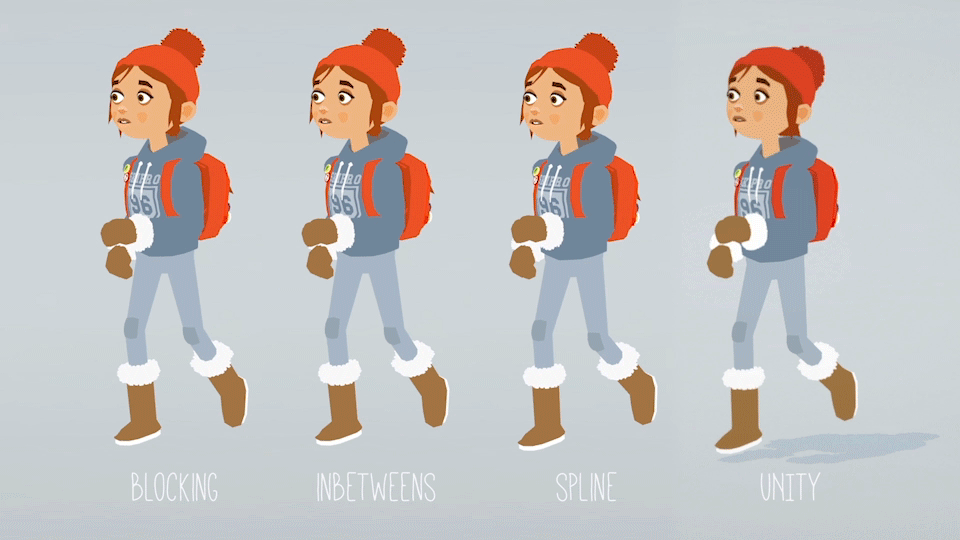Use of Reference for Animation
We've recently posted some breakdown GIFS on Twitter that show the various stages of our animation process. It's nice to see the various stages side by side and it's a great format intended to give people an insight into our creation process. Actually whilst we're talking about that we must thank our former Guerilla Cambridge chum Adam Turnbull, it's a format we liberally 'borrowed' from him (thanks Adam!).
The GIFs we shared have four stages:-
- Blockout
- Inbetweens
- Spline
- Unity
But in fact there is a stage that isn't even included in the above list! A stage which is very important and shouldn't be neglected....Reference!
When I was at Sony I got the chance to do some training and chose to do an Animation Mentor masterclass (for those that don't know, Animation Mentor is an online animation school where you're taught and mentored by industry professionals from the big American animation houses). It's completely film focused, but I still got a great deal from doing it. One of the key points they really tried to drill into us was the use of reference. They were super keen on it and rightfully so.
Utilising reference for your animation will have the same effect as as using reference photos to create concept art, characters or or environment art. It will lend it a sense of realism and allow you to scrutinize over and over again what is actual, rather than what you assuming what might happen based off your imagination or understanding. Now you know what they say about assuming things? That's right, don't do it! Having a piece of reference footage to examine and scrutinize to see exactly where the weight is being placed or shifts to is invaluable. As well as the broad brush strokes it will allow you to add the little touches that will ground your work and make it feel real and tangible. Outside of specific poses it can also help a great deal with timing.
Now, using reference for your animation is not cheating, it's just not. There is no such thing as cheating in animation, all that matters is the end result. Look! Even Walt Disney does it!
Strong pointing skills
And if you can't find the video reference you're after, film it yourself. Everyone has a video camera on their phone these days. If you can't find what you're after then shake-off your inhibitions, prop your phone on a cushion (or get a friend to record it if you're feeling brave) and hit record then go act it out for yourself.
One important point to note on the above, if you have a female character, get female video reference if at all possible. Whilst the broad ingredients of the run will be the same for both men and women, and there is a great deal of range in how women and men run within their respective sexes, you'll get better results if the reference footage you source aligns to your vision for the character you are trying to create.
There is some amazing video reference available these days. During my Animation Mentor course we using BBC Motion Gallery and I recently stumbled across a collection on YouTube, linked below. Remember that Jog breakdown we shared on Twitter? Compare them and see if notice any similarities!
When we were at university (in the ancient mists of time that was 1998) we had to make do with the 19th century work of oddball Eadweard Muybridge (that you can see his work in the title image of this post!). I would have bitten your arm off if you'd offered me access to motion libraries on YouTube or the BBC motion library or to have a phone that I could record my own reference footage on. So don't be shy, use the tools at your disposal or at least give it a whirl, what's the worst that can happen.
That's it for another week, have a cracking weekend everyone :)
Cheers,
Alex & Tom



